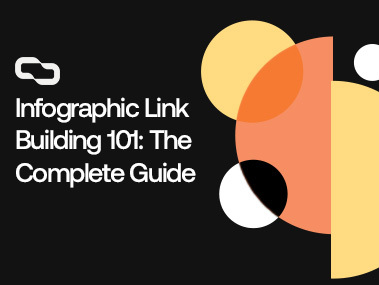Get links on brand new relevant articles for a boost of Authority and Relevance that’ll catapult your SEO. Our links include both DR and Traffic, so you don’t have to choose between one or the other.

Have you ever clicked on a link hoping to find valuable information, only to be met with the frustrating sight of a 404 error page?
Such experiences can annoy users and damage your website’s credibility and search engine ranking.
However, there’s a silver lining.
I’m here to guide you through the process of link reclamation, a simple yet impactful strategy designed to repair the broken links that mar your digital presence.
What Is Link Reclamation?
Link reclamation is all about your strategic approach to finding and recovering the links you’ve lost.
Let’s assume that a link that once pointed to your site has suddenly vanished.
So, your task is to roll up your sleeves and bring that link back home.
To do this effectively, you need to pinpoint exactly why the link went missing.
Was it removed by the person who manages the source page?
Did the page itself disappear, leaving a 404 error in its wake?
Maybe the page was redirected or it’s no longer indexed by Google.
It’s important to remember that a link from a deindexed page, while still existing, loses its clout because it doesn’t contribute to your site’s search visibility.
To successfully reclaim a link, you need to understand these scenarios deeply, so you can choose and apply the most effective strategy to get your link—and the benefits it brings—back in place.
Why Is Link Reclamation Important?
Link reclamation is important because it stops your website from losing important link power when links break, pages move, or URLs are wrong.
It’s not just about fixing broken links.
This process also helps you spot and fix other problems like bad pages, copied content, or confusing site navigation.
Fixing broken links is a smart part of building your website’s link strength.
Website owners don’t like broken links because they’re bad for SEO and make for a poor user experience.
When you fix these links, you’re not only making your site better but also improving the internet as a whole.
This is especially true for the links on your site that you can directly control, which help spread your site’s SEO power around more effectively.
If you’re working on SEO, you know it’s tough to get new links.
Not fixing the ones you already have is like missing out on easy opportunities.
Link Reclamation VS. Claiming Unlinked Brand Mentions
Unlinked mentions and broken links are two different things you might deal with to improve your website’s presence online.
Claiming unlinked mentions is about turning mentions of your brand or company on the internet into new backlinks.
When your brand is mentioned somewhere online, like in an article or on a social media platform, but isn’t linked back to your site, you have an opportunity.
You can reach out and ask the site to turn that mention into a clickable link that leads to your website, effectively creating a new backlink.
Link reclamation, on the other hand, focuses on fixing links that used to lead to your website but don’t anymore.
This might happen if a webpage is deleted or if the URL changes after a website update or rebranding.
The goal here is to find these broken links and fix them so they point to the correct page on your site again.
For this guide, we’ll focus on reclaiming lost links.
How to Find (and Reclaim) Lost Links?
1. Find Broken Internal Links
To start the process of identifying broken internal links, you have several tools at your disposal.
For those looking for a free option, Google Analytics and Screaming Frog’s SEO Spider are excellent choices.
The SEO Spider, in particular, allows you to crawl up to 500 URLs for free, which suits many small to medium-sized websites.
If your site is larger, you might consider the paid version of Screaming Frog or other paid tools like Ahrefs Site Explorer and Lumar.
Let’s use Screaming Frog’s SEO Spider as an example.
Once you initiate a crawl on your site, the tool will analyze each page and check for link integrity.
After the crawl is complete, navigate to the ‘Response Codes’ tab.
This area lets you filter the results to show only client errors, specifically those in the 4xx category, which indicate broken links.
Once you’ve identified these errors, you can sort them in descending order to prioritize the fixes.
By selecting a URL with a 4xx status code, you can delve deeper into the issue.
The ‘Inlinks’ tab at the bottom panel of the tool shows you where the broken link is located on your site, providing a clear direction on where to go to resolve the issue.
For larger sites, or if you’re dealing with a substantial number of broken links, Screaming Frog offers the convenience of exporting the list of problematic URLs to a CSV file.
This feature allows for easier management and tracking of your link repair efforts.
2. Fix Broken Internal Links
The next step in your website maintenance is to tackle those broken links.
You’ll need to visit each page on your site that has these issues.
Once you’re there, it’s time to get to work by updating or replacing the broken URLs.
However, sometimes you’ll encounter a link that’s beyond repair.
Perhaps the content it pointed to is gone, with no relevant replacement in sight, especially if it’s a leftover from an old web redesign.
In such cases, the best course of action is to remove the link entirely.
It’s like decluttering; sometimes, getting rid of what’s broken is better than leaving it in place.
3. Find Lost External Backlinks
Once you’ve tidied up the broken internal links on your site, it’s time to turn your attention to lost or broken external backlinks.
This task can be a bit trickier than fixing internal links.
This is because external links are not under your control; their recovery depends on the cooperation of the other site’s owner.
To identify broken backlinks pointing to your site, you can use tools like Majestic or Ahrefs Site Explorer.
For a free option, the Free Backlink Checker from SEO Review Tools is a handy resource.
This tool allows you to view up to 100 broken backlinks to your site in each report.
The good news is that after addressing the initial 100 backlinks, you can rerun the report to identify and reclaim more, in sets of 100.
4. Reclaim Lost External Backlinks
Now that you’ve identified your broken backlinks, it’s time to reach out to the respective site owners.
Share the correct URLs for your website with them.
They’ll likely be grateful for the heads-up and will be eager to update their pages with accurate links.
This process is mutually beneficial: it helps them keep their site up-to-date and allows you to fortify your backlink profile without the need to create new links.
Reclaim Lost Links (& Claim Unlinked Mentions) with a Reverse Image Search
Images often serve as valuable sources for backlinks but can also lead to broken backlinks and unclaimed mentions.
To address this, utilize reverse image search tools like TinEye or Google Images.
By uploading your image or using the image’s URL, you’ll see a list of web pages using your image.
Review each page to ensure your image links back to your site.
If it’s correctly linked, you’re all set with a solid backlink.
But if the image isn’t linked or the link is broken, reach out to the site owner with the correct link to associate with your image.
FAQs
What Is the Link Reclamation Process?
The link reclamation process is identifying and restoring lost or broken links to enhance your website’s SEO and usability.
What Are the Benefits of Link Reclamation?
The benefits of link reclamation are boosting your site’s SEO, improving user experience, and leveraging existing content to strengthen your backlink profile.
How Do I Reclaim Backlinks?
To reclaim backlinks, identify lost or broken links using tools like Ahrefs, then contact the site owners to update or restore the links.
Does Broken Link Building Still Work?
Broken link building still works as it provides value to website owners by fixing broken links, enhancing both their and your site’s SEO.
Conclusion
Link reclamation is not just a fix-it task for broken links, but a strategic move to boost your site’s traffic and climb those SEO rankings.
Tailoring a mix of backlink types to the unique contours of your niche and current backlink landscape can dramatically elevate your website’s SEO game.
Feeling overwhelmed by the nuances of link reclamation?
No worries!
Our team is on standby, ready to dissect your backlink profile, spotlight areas ripe for quick wins, and tailor a strategy that not only revives your site but propels its growth.
Find out your exact cost of ranking for your dream keyword
Find out nowLet’s get you ranking now
If you want the team at Get Me Links to help you get more traffic
Book a call NOW Back to Blog
Back to Blog 8 Minutes Read
8 Minutes Read


